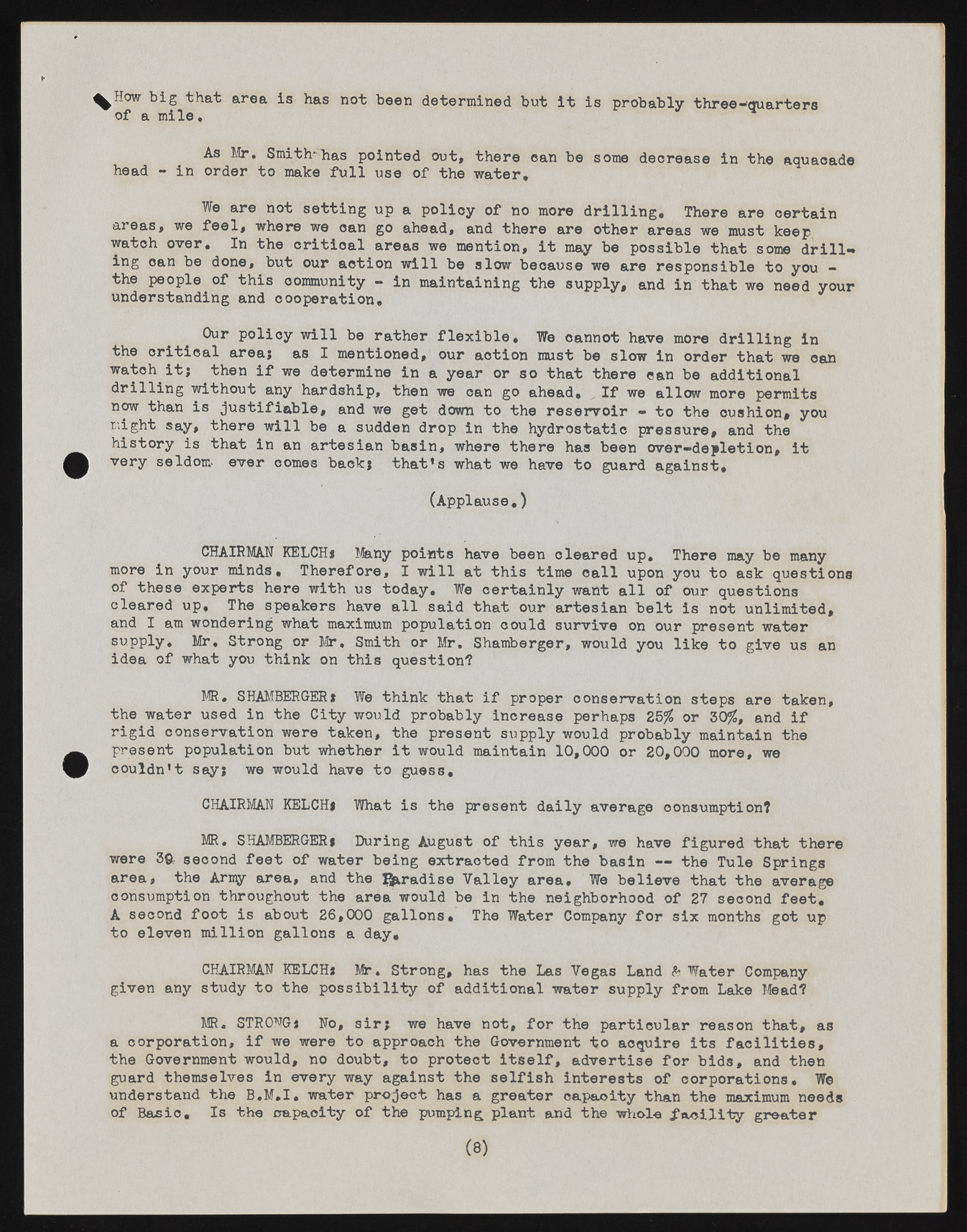Copyright & Fair-use Agreement
UNLV Special Collections provides copies of materials to facilitate private study, scholarship, or research. Material not in the public domain may be used according to fair use of copyrighted materials as defined by copyright law. Please cite us.
Please note that UNLV may not own the copyright to these materials and cannot provide permission to publish or distribute materials when UNLV is not the copyright holder. The user is solely responsible for determining the copyright status of materials and obtaining permission to use material from the copyright holder and for determining whether any permissions relating to any other rights are necessary for the intended use, and for obtaining all required permissions beyond that allowed by fair use.
Read more about our reproduction and use policy.
I agree.Information
Digital ID
Permalink
Details
More Info
Rights
Digital Provenance
Publisher
Transcription
^ H o w big that area is has not been determined but it is probably three -'Quarters of a mile. As Mr. Smith- has pointed out, there ean be some decrease in the aquacade head - in order to make full use of the water* We are not setting up a policy of no more drilling. There are certain areas, we feel, where we ean go ahead, and there are other areas we must keep watch over. In the critical areas we mention, it may be possible that some drilling can be done, but our aetion will be slow because we are responsible to you - the people of this community — in maintaining the supply, and in that we need your understanding and cooperation. Our policy will be rather flexible, We cannot have more drilling in the critical area; as I mentioned, our action must be slow in order that we ean watch it; then if we determine in a year or so that there ean be additional without any hardship, then we can go ahead. . If we allow more permits now than is justifiable, and we get down to the reservoir - to the oushion, you might say, there will be a sudden drop in the hydrostatic pressure, and the history is that in an artesian basin, where there has been over-depletion, it very seldom- ever comes back; that’s what we have to guard against* (Applause,) CHAIRMAN KELCH* Many points have been cleared up. There may be many more in your minds. Therefore, I will at this time call upon you to ask questions of these experts here with us today. We certainly want all of our questions cleared up. The speakers have all said that our artesian belt is not unlimited, and I am wondering what maximum population could survive on our present water supply. Mr, Strong or Mr, Smith or Mr. Shamberger, would you like to give us an idea of what you think on this question? MR. SHAMBERGER* We think that if proper conservation steps are taken, the water used in the City would probably increase perhaps 25$ or 30$, and if rigid conservation were taken, the present supply would probably maintain the present population but whether it would maintain 10,000 or 20,000 more, we couldn’t say; we would have to guess. CHAIRMAN KELCH* What is the present daily average consumption? MR. SHAMBERGER* During August of this year, we have figured that there were 3© second feet of water being extracted from the basin — the Tule Springs area, the Army area, and the I^radise Valley area. We believe that the average consumption throughout the area would be in the neighborhood of 27 second feet. A second foot is about 26,000 gallons. The Water Company for six months got up to eleven million gallons a day. CHAIRMAN KELCH* 16*. Strong, has the Las Vegas Land ft Water Company given any study to the possibility of additional water supply from Lake Mead? MR. STRONG* No, sir; we have not, for the particular reason that, as a corporation, if we were to approach the Government to aoquire its facilities, the Government would, no doubt, to protect itself, advertise for bids, and then guard themselves in every way against the selfish interests of corporations. We understand the B.M.I. water project has a greater capacity than the maximum needs of Basic. Is the oapaoity of the pumping plant and the whole facility greater (8)

